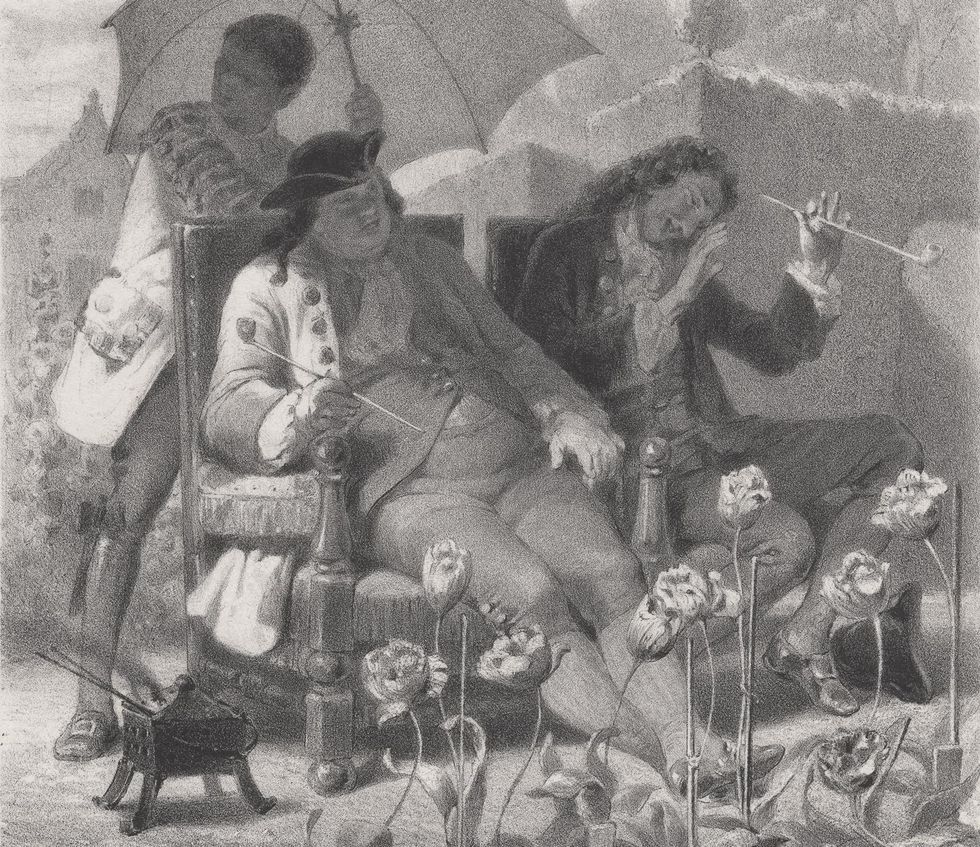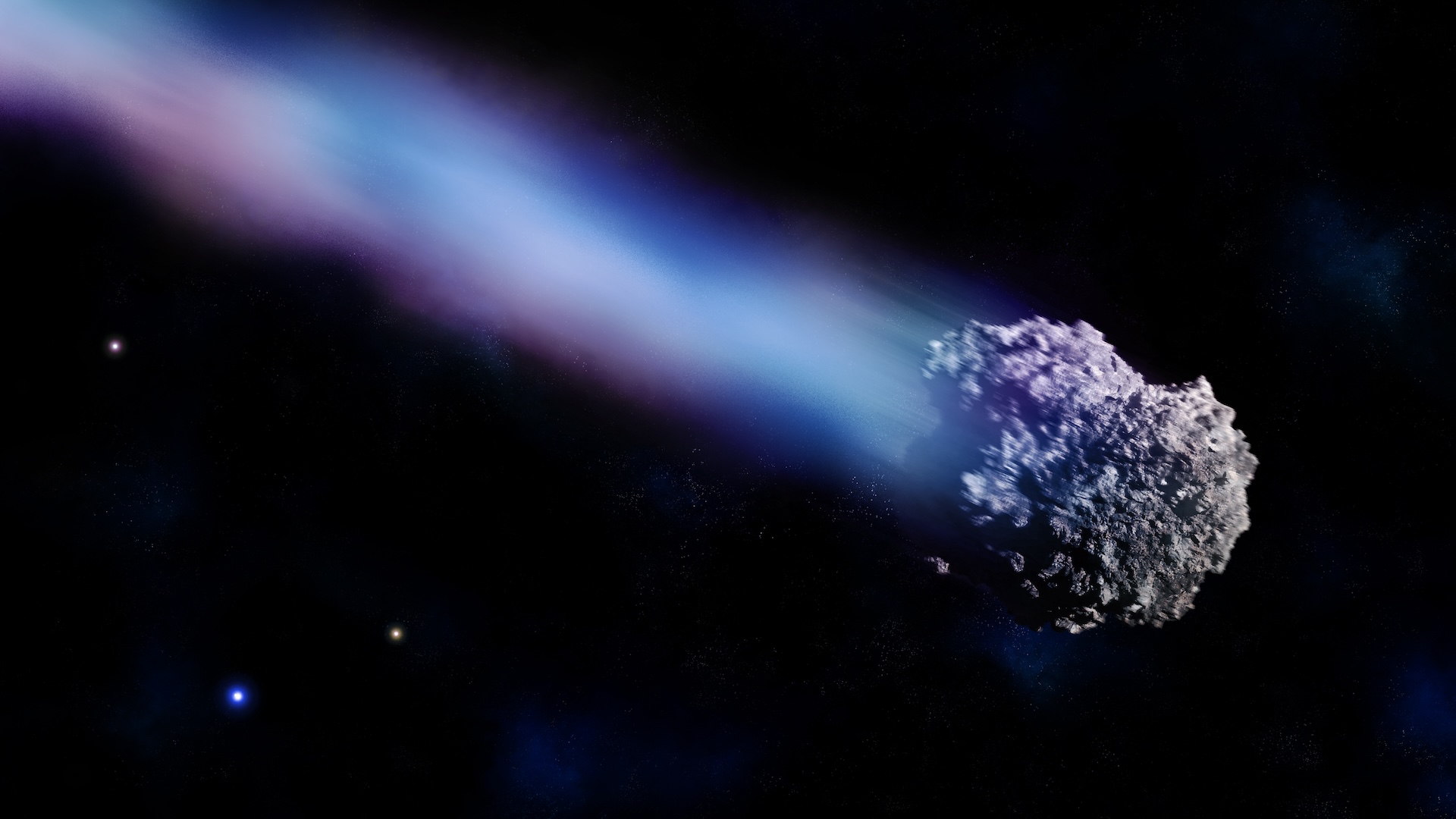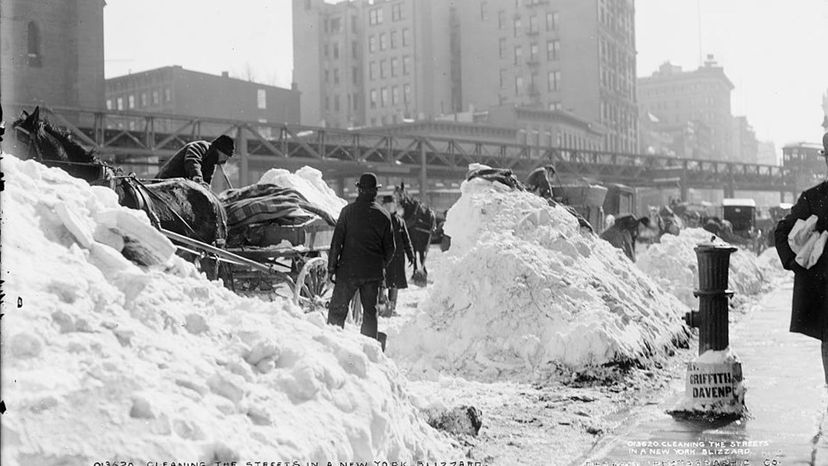
Anyone who’s ever lived in a chilly climate knows snowstorms well. Sometimes the weather forecast gives ample warning, but other times these storms catch us by surprise. Plows struggle to keep roads clear, schools are closed, events are canceled, flights are delayed and everyone is stuck shoveling piles of the white stuff.
But there are those rare snowstorms that exceed all forecasts, break all records and cause mass devastation (even if it’s devastation that will melt in a few days or weeks). These storms are the worst of the worst, weather events that seem more like elemental blasts of pure winter rather than a simple combination of wind, temperature and precipitation.
Defining the 10 “biggest” snowstorms can be tricky. For instance, a blizzard that might bring New York City to a screeching standstill could have school children in Moscow heading out to school wearing an extra pair of socks. Also, much of recorded history involved people telling their grandchildren, “You think this storm is bad? You should have seen the one that trapped us in our cabin the winter I turned 11.”
That being said, there are a few metrics we can use to assess the severity of a snowstorm, and it’s not just volume of snow. The Northeast Snowfall Impact Scale (NESIS), was created in 2004 to characterize snowstorms in the Northeast U.S. similarly to how Fujita Scale rates tornadoes and the Saffir-Simpson Scale classifies hurricanes. NESIS takes in account a variety of factors and generates a single number that signifies a storm’s severity, usually on a scale from one to 10 — and sometimes higher. NESIS takes into consideration that sometimes the worst storms in the Northeast involve relatively modest snowfalls whipped into zero-visibility by hurricane-force winds. Some storms are worse than others because they impact major urban areas, or are so widespread that they affect several major urban areas.
Timing can play a role as well; a storm that hits during weekday rush hour can wreak havoc the way one that hits on a Saturday morning won’t, and a freak early storm when leaves are still on the trees can cause enormous amounts of damage. With those factors in mind, here is our list of the biggest snowstorms of all time, in no particular order.
10: The Great Blizzard of 1888, Northeastern United States
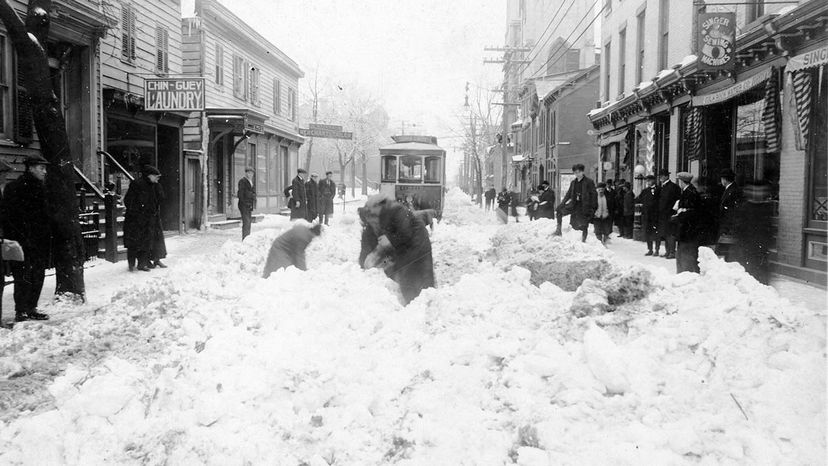
On March 11, 1888, one of the worst blizzards in American history hit the Northeast. In terms of storm severity, this one had it all: enormous amounts of snow, frigid temperatures and howling winds that whipped up snow drifts 30 to 40 feet (9.1 to 12.1 meters) tall. The storm was so massive, it covered the entire northeastern United States from New England to the Chesapeake Bay, including major metropolitan areas like New York City. More than 400 people died during the storm, including more than 100 who were lost at sea.
The storm struck in early March and started out as a serious rainstorm. From Sunday night to Monday morning, the temperature plummeted and the rain turned to snow. In the end, New York City received 55 inches (1.4 meters) of snow, shutting the city down and causing floods when the snow melted. Keen, New Hampshire, got as much as 36 inches (0.9 meters) and New Haven, Connecticut, got 45 inches (1.1 meters) .
9: The Storm of the Century, 1993, Eastern United States
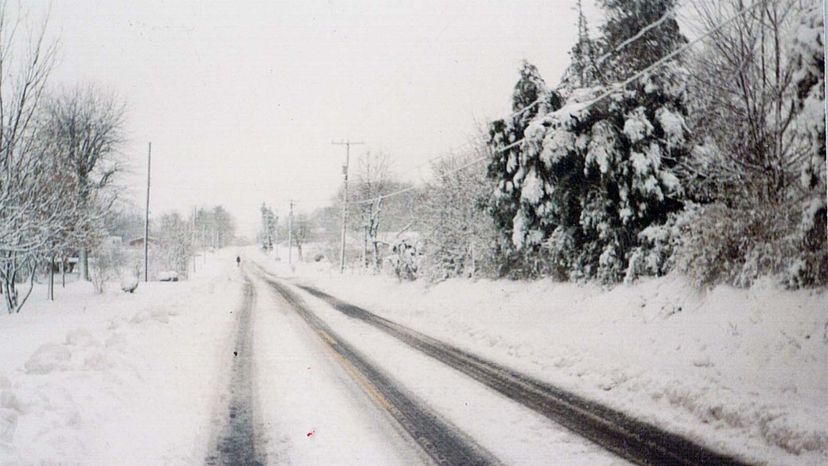
In 1993, an early March storm surged up the East Coast of the United States, unleashing snow and wind on a wider area than any other storm in recorded history. Massive snowfalls were recorded from eastern Canada to southern Alabama. Parts of 26 states were hit; roughly half of the entire U.S. population was affected, including many large cities [source: NOAA]. All-time records for snowfall were set in locations from Birmingham, Alabama, and Chattanooga, Tennessee, to Asheville, North Carolina. Mount LeConte, Tennessee, received 60 inches (1.5 meters) of snow.
This storm broke numerous weather records. A record low temperature of minus 12 degrees Fahrenheit (minus 24.4 degrees Celsius) was recorded in Burlington, Vermont, and even Daytona Beach, Florida, felt the effects, with a low of 31 degrees Fahrenheit (minus 0.56 degrees Celsius). Birmingham, Alabama, received more than 17 inches (43 centimeters) of snow, while Atlanta was hit with 4 inches (10.2 centimeters). Snowfall totals were amplified farther north — Syracuse, New York, got more than 40 inches (1.02 meters), for example. Mountainous areas in the Appalachians and Catskills were hit with the most snowfall.
High winds were a major issue causing damage as far north as Nova Scotia and as far south as Florida. Winds were clocked as high as 144 miles per hour (231.7 kilometers per hour) in New Hampshire. Using storm surge and barometric pressure data, meteorologists scored this storm a 5, or extreme, on the NESIS scale.
8: New York City Blizzard of 2006
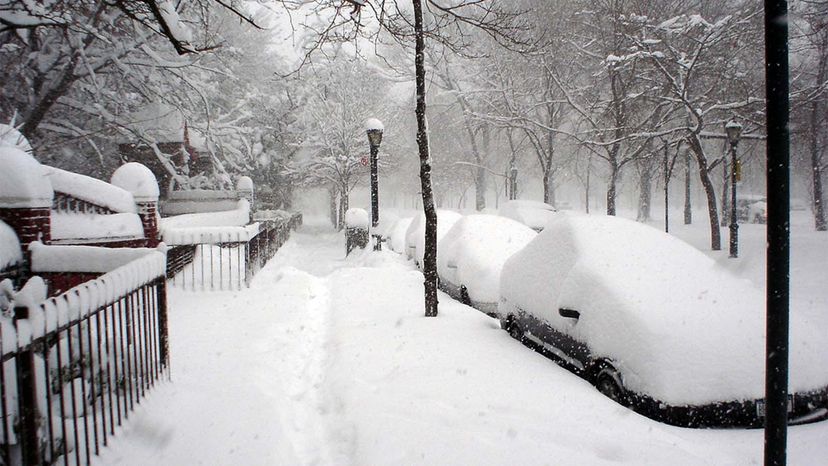
This storm that hit New York City Feb. 11, 2006, covered a smaller area than other major snowstorms and didn’t have high winds. But when it comes to snowfall, this was a doozy. Nearly 27 inches (68.5 centimeters) of snow fell on the city — which at the time was an inch more than the previous record for snowfall. The snow knocked out power to millions, brought all forms of transportation to a screeching halt and shut down Kennedy International, La Guardia and Newark Liberty International Airports.
The weather station at New York’s Central Park Zoo recorded a total of 26.9 inches (68.3 centimeters) of snow, which is just shy of the most snowfall ever recorded in the Park’s history [source: Weather.gov].
7: Lhunze County, Tibet, 2008
Tibet is known for some of the world’s tallest mountains, including Mount Everest. It gets bitterly cold there in the winter, but the climate is generally very arid. Some passes through the Himalayas remain passable throughout the year because of the low snowfall rates. For that reason, the snowstorm that hit Lhunze County in October 2008 was a shock to its citizens.
Chinese officials reported an average snow depth of 59 inches (1.5 meters). Some villages experienced continuous snow for 36 hours dropping 5 or 6 feet (1.52 or 1.83 meters) on the ground [source: China Daily]. Many citizens in Lhunze were trapped by collapsed buildings or roads blocked or destroyed by the massive amount of snowfall. Seven people were killed, and more than 144,000 heads of livestock died in the storm. Roads were closed for days as rescue crews fought to clear them and take food to people trapped by the storm.
6: Mount Shasta, California, 1959
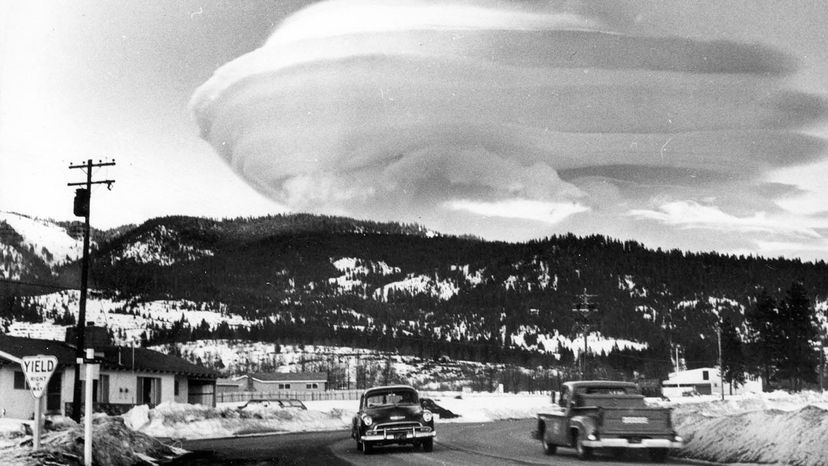
Between Feb. 13 and 19, 1959, about 15.7 feet (4.8 meters) of snow fell on Mount Shasta. That was the most snow to ever fall during one continuous snowstorm in North America to that date. The record held until the early 1990s. Meteorologists have found analyzing this particular storm a challenge because there is no satellite imagery or atmospheric observations. But a study published in the Journal of Operational Meteorology determined via local records that during the 1959 storm, it snowed continuously for six days, averaging 2.6 feet (80 centimeters) per day at the Old Ski Bowl. Mountain roads were closed and snow drifts 24 feet (7.3 meters) high were common.
Substantial snow — about 4.1 feet (1.25 meters) — also fell in the city of Mount Shasta, which is about 6,302 feet (1,921 meters) lower in elevation than the Old Ski Bowl. The snow caused structural damage at local businesses in Mount Shasta, and local transportation ground to a standstill for days.
5: The Eastern Canadian Blizzard of 1971
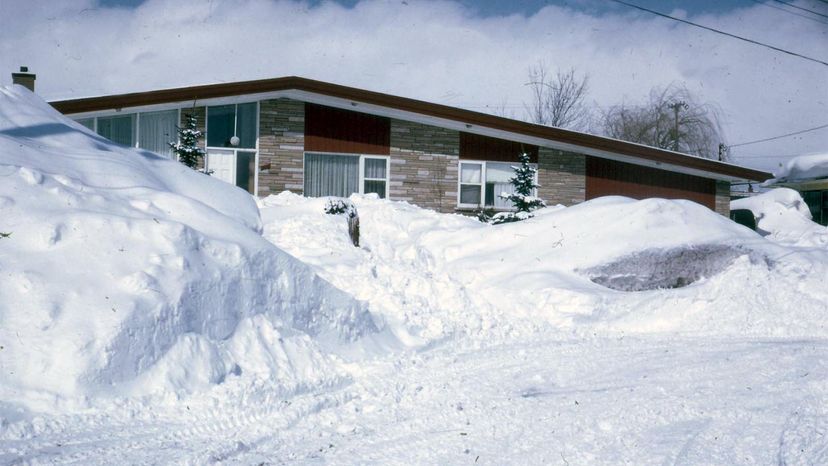
This March nor’easter hit portions of eastern Canada March 3 to March 5, 1971, creating classic blizzard conditions throughout. Within 24 hours, Montreal was covered in 16.8 inches (43.2 centimeters) of snow. Some areas across Quebec received as much as 32 inches (80 centimeters).
But it wasn’t just snow that brought these Canadian cities to their knees. This storm produced heavy winds that whipped the snow into the air and obliterated visibility. Workers and schools were let off early, and because conditions were dire, many people were left stranded on roads, in bars and in their offices. The conditions, combined with frigid temperatures, resulted in more than 30 fatalities. Even the Montreal Canadiens-Vancouver Canucks hockey game was canceled.
4: The Iran Blizzard of 1972
A blizzard struck Iran Feb. 3, 1972, killing more than 4,000 people and flattening 200 villages. The storm, which lasted five days, covered nearly all of Iran with snow. In some areas, the snow was so deep — up to 26 feet (8 meters) — it literally buried citizens. In southern Iran, at least 4,000 villagers from the Ardekan area were reported trapped or buried, making this the deadliest snowstorm in history.
The reasons why so many people died vary. Daily temperatures plummeted to around minus 13 degrees Fahrenheit (minus 25 degrees Celsius). Also, many people trapped in rural areas eventually ran out of food and fresh water, or they froze because they had no heat.
3: The Great Snow of 1717, New England
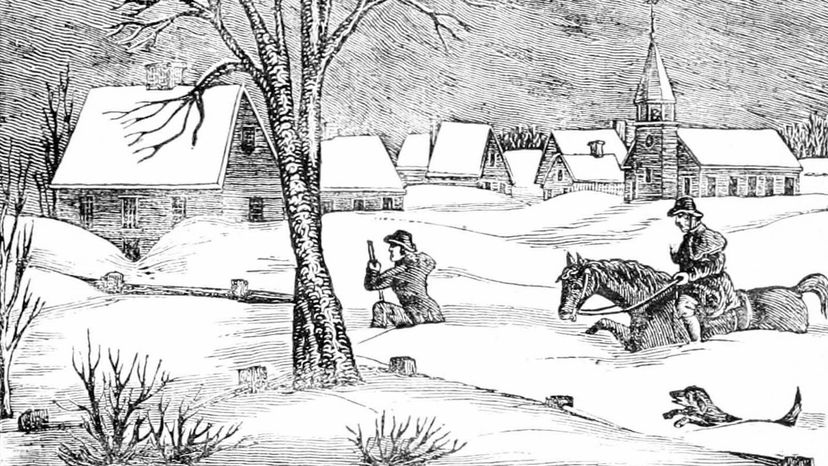
The Great Snow of 1717 was really a series of four storms in 11 days that struck in quick succession in late February and early March 1717. No one is quite sure how widespread the effects were, as record-keeping was spotty in colonial New England. Heavy snow was recorded as far away as Philadelphia, but Boston got hit the hardest.
That winter had already been a snowy one, with reports of 5 feet (1.5 meters) of snow already on the ground when the Great Snow began. Three or 4 more feet (91.4 or 122 centimeters) were added to that total. Cotton Mather reported 16-foot (4.8-meter) drifts in a sheep pastures, and single-story houses “totally covered with ye Snow.”
Orchards were heavily damaged, and livestock — deer, sheep, horses and cows — died in large numbers. Few colonists had barns; some resorted to taking animals into their homes to protect them from the storm.
Such a massive snowfall would’ve hit hard in any era. But at a time when one could travel only by horseback or on foot, when no method of snow removal beyond a shovel and a strong back was available, and when many small communities struggled in ordinary winter conditions, the Great Snow hit especially hard. Roads were difficult to traverse well into March. In fact, there wasn’t really anything that could be done about the roads except to wait for warmer weather to melt the snow.
2: The Buffalo Blizzard of 1977
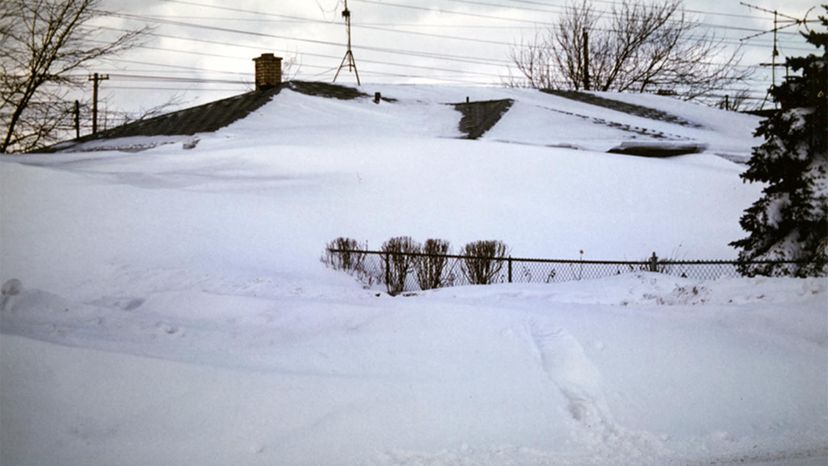
On Thursday, Jan. 27, 1977, the National Weather Service issued a winter storm warning for the area. But by Jan. 28, things worsened and nobody knew how bad they would get. Buffalo had already received significant snow — in November, 31.3 inches (79.5 centimeters); in December, 60.7 inches (1.5 meters); and in the first 27 days of January, 59.1 inches (1.5 meters) fell. By Jan. 28, winds were gusting between 45.9 and 68.9 miles per hour (74 and 111 kilometers per hour), bringing wind chills to minus 59.8 degrees Fahrenheit (minus 51 degrees Celsius). Massive snowdrifts swallowed up houses.
The snow and strong winds created a zero-visibility and blocked roads. Police banned all vehicles from the roads — only snowmobiles were used to get around. The storm’s intense cold stranded people at work, schools, or, worse, in their cars. The National Guard had to be called in to help with snow removal. These conditions (and let’s face it, Buffalo is used to snow) led to 29 deaths. Storm effects were felt in Canada and as far east as Watertown, New York.
1: Great Texas Snowstorm of 2021
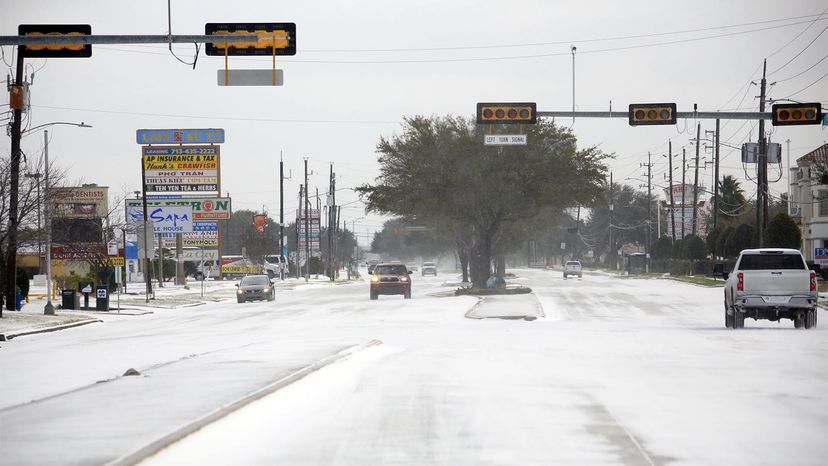
Many of the cities and states are used to nasty winter weather. But not Texas. So when a strong Arctic cold front passed through the state Feb. 14, 2021, Texans were not prepared for what unfolded next. Once the frigid temperatures settled in, snow and sleet began to fall. Though not truly significant amounts of snow fell — most areas of South-Central Texas got about an inch (2.5 centimeters) while areas near I-35 got between 3 and 8 inches (7.6 and 20.3 centimeters) — roads quickly became impassable.
Temperatures fell into the teens or single digits, with wind chills into the single digits or even below zero. More winter precipitation, including snow and sleet, continued along the Texas coast. Houston reported temperatures of 13 degrees Fahrenheit (minus 10 degrees Celsius); Galveston had a low of 20 degrees Fahrenheit (minus 6.6 degrees Celsius); and College Station hit 5 degrees Fahrenheit (minus 15 degrees Celsius).
The combination of the ice and extreme cold caused widespread power outages throughout the entire state that lasted for several days. A survey conducted by the University of Houston Hobby School of Public Affairs determined that more than two-thirds, or 69 percent, of Texans lost power at some point between Feb. 14 and Feb. 20. Almost half of state residents, or about 49 percent, lost running water. The storm contributed to at least 210 deaths, and the Federal Reserve Bank of Dallas estimated the state’s storm-related financial losses between $80 billion and $130 billion.
Originally Published: Nov 12, 2009
Biggest Snowstorms FAQ
What causes a blizzard?
Blizzards occur when very cold air (below freezing in temperature) meets warm air, creating snow. This creates atmospheric tension, which results in high-speed wind notes Phenomena.org.
Why are blizzards so dangerous?
Blizzards typically feature a mix of blinding snowfall, which limits visibility, and extremely strong winds, which create very cold temperatures and wind chill. These effects can cause dangerous road conditions and lead to major accidents. They can also cause serious health issues like frostbite and hypothermia.
What was the worst blizzard?
The Iran Blizzard of 1972 is considered the deadliest blizzard in history.
What happened in the Iran Blizzard of 1972?
The deadliest blizzard on record struck Iran in February 1972, killing more 4,000 people and flattening 200 villages. The storm, which lasted seven days, dumped up to 26 feet (8 meters) of snow in some areas on a region of northwestern, central and southern Iran, roughly the size of Greece.
What is the most snow ever recorded in one day?
The heaviest snowfall ever recorded in a 24-hour period in the U.S. occurred on April 14 and 15, 1921 in Silver Lake, Colorado. During this single day, 6.3 feet of snow fell onto the ground according to Weather.com.
Lots More Information
Related Articles
Sources
- Canoe.ca. “Il y a 30 ans, la «tempête du siècle» s’abattait sur le Québec.” LCN, April 3, 2001. Oct. 25, 2009.http://lcn.canoe.ca/infos/national/archives/2001/03/20010304-093910.html
- Cheshire, Laura. “Have Snow Shovel, Will Travel.” National Snow and Ice Data Center, 1997. Oct. 27, 2009.http://nsidc.org/snow/shovel.html
- Environment Canada. “Blizzards – I am Canadian!” Envirozine, Feb. 15, 2001. Oct. 27, 2009.http://www.ec.gc.ca/EnviroZine/English/issues/04/feature1_e.cfm
- FEMA. “Watch Out…Winter Storm’s Ahead!” Oct. 26, 2009. http://www.nws.noaa.gov/om/brochures/owlie-winter.pdf
- Hurricanes-blizzards-noreasters.com “The Northeast Blizzard of 1978.” Oct. 26, 2009. http://www.hurricanes-blizzards-noreasters.com/78blizzard.html
- Johnson, Allan. “The Chicago Blizzard of 1967.” Chicago Tribune, 2009. Oct. 27, 2009. http://www.chicagotribune.com/news/politics/chi-chicagodays-1967blizzard-story,0,1032940.story
- Lott, Neil. “National Climatic Data Center, Technical Report 93-01: The Big One! A review of the March 12-14, 1993 ‘Storm of the Century’.” National Oceanic and Atmospheric Administration, May 14, 2993. Oct. 26, 2009.http://www1.ncdc.noaa.gov/pub/data/blizzard/blizz.txt
- National Oceanic and Atmospheric Administration. “Snowfall Feb. 12, 2006: New York City/Upton NY Forecast Area.” Feb. 13, 2006. Oct. 26, 2009. http://www.erh.noaa.gov/aly/Past/2006/Feb_12_2006/Feb_12_2006_OKX.htm
- National Weather Service. “An Overview of the Blizzard.” Oct. 26, 2009. http://www.erh.noaa.gov/buf/blizzard/bliz1sum.html National Weather Service. “Biggest Snow Storms in the United States from 1888 to Present.” Oct. 26, 2009. http://www.crh.noaa.gov/mkx/climate/big.php
- Science Daily. “Ranking Winter Storms: Mete orologists’ New Scale Will Help in Emergency Planning.” Jan. 1, 2007. Oct. 26, 2009.http://www.sciencedaily.com/videos/2007/0101-ranking_winter_storms.htm
- Strauss, Neil. “The Great Northeast Blizzard of 1978 Remembered 30 Years Later in Southern New England.” National Oceanic and Atmospheric Administration. Oct. 27, 2009. http://www.erh.noaa.gov/box/papers/blizzard78/mainblizzardof78.htm
Cite This!
Please copy/paste the following text to properly cite this HowStuffWorks.com article:
Note: This article have been indexed to our site. We do not claim legitimacy, ownership or copyright of any of the content above. To see the article at original source Click Here










